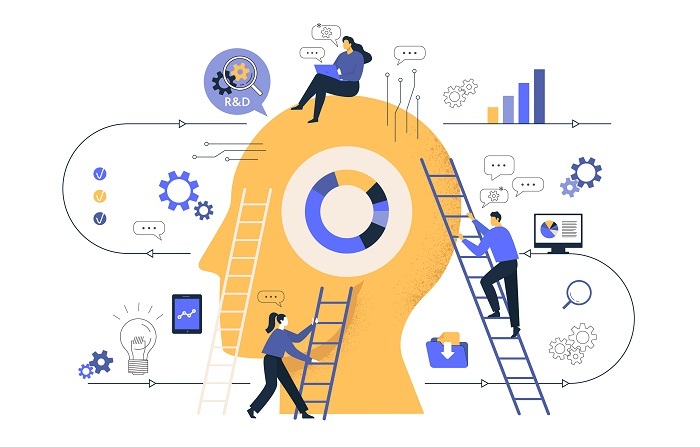
 Data Structure
Data Structure Networking
Networking RDBMS
RDBMS Operating System
Operating System Java
Java MS Excel
MS Excel iOS
iOS HTML
HTML CSS
CSS Android
Android Python
Python C Programming
C Programming C++
C++ C#
C# MongoDB
MongoDB MySQL
MySQL Javascript
Javascript PHP
PHP
- Selected Reading
- UPSC IAS Exams Notes
- Developer's Best Practices
- Questions and Answers
- Effective Resume Writing
- HR Interview Questions
- Computer Glossary
- Who is Who
How to Evoke Powerful Feelings in Your Customers with Emotional Marketing?
In the world of marketing, connecting with customers on an emotional level can have a profound impact on their perception of your brand and their decision-making process. Emotional marketing is a strategy that aims to evoke strong feelings and create a deep connection between the brand and its audience. By tapping into the power of emotions, businesses can cultivate brand loyalty, drive engagement, and ultimately boost sales. In this article, we'll explore in detail how to evoke powerful feelings in your customers through emotional marketing, along with examples of successful campaigns.

Understanding Emotional Marketing
Emotional marketing is a strategic approach that focuses on appealing to customers' emotions rather than solely relying on rational arguments. It recognizes that human decision-making is heavily influenced by emotions, and by creating a strong emotional bond with customers, brands can foster a lasting connection and influence their purchasing decisions. Research has consistently shown the effectiveness of emotional marketing in driving brand growth and customer engagement.
According to a study by the Institute of Practitioners in Advertising, emotional campaigns are twice as likely to generate profit growth compared to rational campaigns. Furthermore, a study by the Advertising Research Foundation found that advertisements that evoke an emotional response have a higher likelihood of being shared, leading to increased brand awareness and reach.
Identifying Your Brand's Emotional Appeal
To effectively implement emotional marketing, it's crucial to identify the emotional appeal of your brand. What are the core values, beliefs, or experiences that align with your brand's identity? Understanding these elements will help you determine the emotions you want to evoke in your customers.
For example,Nike, the athletic footwear and apparel brand, has successfully tapped into emotions like inspiration, determination, and empowerment. Their "Just Do It" campaign has been widely recognized for its ability to motivate and inspire individuals to overcome challenges and pursue their goals. By associating their brand with the concept of personal achievement and pushing beyond limits, Nike creates a deep emotional connection with their target audience.
Crafting Emotional Brand Stories
One of the most powerful ways to engage customers emotionally is through storytelling. By telling compelling stories that resonate with your target audience, you can create a deep emotional connection and establish a sense of shared values.
For instance, Procter & Gamble's "Thank You, Mom" campaign for the Olympic Games is a prime example of emotional storytelling. The campaign showcased the journey of athletes and the unwavering support and sacrifices made by their mothers. By highlighting the emotional bond between mothers and their children, Procter & Gamble evoked feelings of love, pride, and gratitude. The campaign resonated with audiences worldwide and received widespread acclaim, contributing to increased brand recognition and sales.
Utilizing Visuals and Imagery
Visuals play a significant role in evoking emotions and creating a memorable brand experience. The use of colors, images, and design elements can elicit specific emotional responses from customers.
For instance, The luxury brand Tiffany & Co. has established a distinct visual identity associated with elegance, sophistication, and romance. The iconic Tiffany Blue color is instantly recognizable and evokes feelings of luxury, exclusivity, and desire. The brand's advertisements often feature stunning visuals of diamond jewelry in elegant settings, appealing to customers' desires for indulgence and refined beauty.
Engaging with Customer Stories and User-Generated Content
Incorporating user-generated content (UGC) and customer stories into your marketing strategy can be a powerful way to tap into customers' emotions and build a sense of community. UGC allows customers to share their experiences and stories associated with your brand, creating a sense of authenticity and connection.
One notable example is Starbucks' annual "Red Cup Contest" on social media. Customers are encouraged to share photos of their festive Starbucks cups using the hashtag #RedCupContest.
By showcasing these photos on their social media channels and engaging with customers' stories, Starbucks taps into emotions of joy, holiday spirit, and togetherness. The campaign not only generates excitement and engagement but also strengthens the emotional bond between the brand and its customers.
Building Empathy and Social Impact
Emotional marketing can extend beyond individual emotions to encompass empathy and social impact. By aligning your brand with a cause or addressing societal issues, you can evoke emotions of compassion, inspiration, and a sense of making a difference.
A prime example is the Dove "Real Beauty" campaign. Dove aimed to challenge beauty standards and promote body positivity by featuring diverse models in their advertisements. By celebrating the beauty of all individuals, regardless of size, shape, or ethnicity, Dove tapped into emotions of inclusivity, self-acceptance, and empowerment. The campaign received widespread attention and sparked a global conversation about redefining beauty standards.
Here are Some More Real-life Examples of Campaigns
Coca-Cola's "Share a Coke" ?Coca-Cola launched a campaign where they replaced their logo on bottles and cans with popular names and terms like "Friend," "Mom," and "BFF." The campaign aimed to evoke feelings of personal connection, friendship, and happiness. By encouraging customers to share a Coke with someone special, the brand tapped into the emotional aspect of relationships and generated widespread social media engagement.
Google's "Dear Sophie" ? In this heartwarming ad, Google tells the story of a father who uses Google products to create a digital scrapbook for his daughter, Sophie, from the day she was born. The ad evokes emotions of nostalgia, love, and the passage of time. It showcases how Google's services can help capture and preserve precious memories, striking a chord with viewers on an emotional level.
Pampers' "Pampers Love Sleep & Play" ? Pampers, a brand known for baby care products, launched a campaign that focused on the emotional journey of becoming a parent. The campaign included touching commercials depicting the ups and downs of parenting, emphasizing the importance of providing love, comfort, and care to babies. By tapping into the emotional bond between parents and their children, Pampers created a strong connection with their target audience.
Airbnb's "Belong Anywhere" ? Airbnb's "Belong Anywhere" campaign aimed to evoke feelings of inclusivity, diversity, and cultural exchange. The campaign showcased real stories of Airbnb guests experiencing local cultures and forming connections with their hosts. By highlighting the power of travel to create meaningful experiences and foster a sense of belonging, Airbnb struck an emotional chord with travelers and positioned itself as a facilitator of authentic connections.
Always' "Like a Girl" ? Always, a feminine hygiene brand, launched the "#LikeAGirl" campaign to challenge societal stereotypes and empower young girls. The campaign featured a video highlighting how the phrase "like a girl" is often used as an insult, but can be redefined as a statement of strength and confidence. The emotional impact of the campaign led to widespread support and engagement, with people sharing their own stories and using the hashtag to promote positive perceptions of girls and women.
Conclusion
Emotional marketing is a powerful tool that can help businesses create a deep connection with their customers, drive engagement, and foster brand loyalty. By identifying your brand's emotional appeal, crafting compelling brand stories, utilizing visuals and imagery, engaging with customer stories and UGC, and building empathy and social impact, you can evoke powerful feelings in your customers.
Data analysis and studies have consistently shown the effectiveness of emotional marketing in driving brand growth and customer engagement. By leveraging the power of emotions, brands can create memorable experiences and establish an emotional bond that goes beyond the transactional relationship, leading to long-term success. When customers feel an emotional connection with your brand, they are more likely to become loyal advocates, driving both immediate and future business impact. Embrace the power of emotions in your marketing strategies and forge a strong emotional connection with your customers to stand out in today's competitive landscape.

